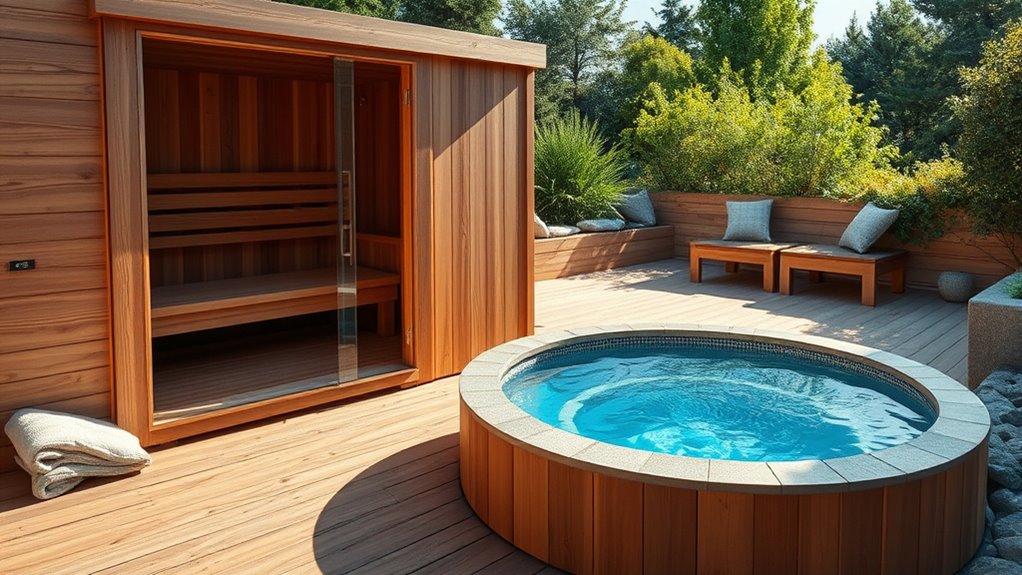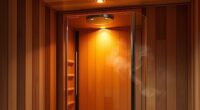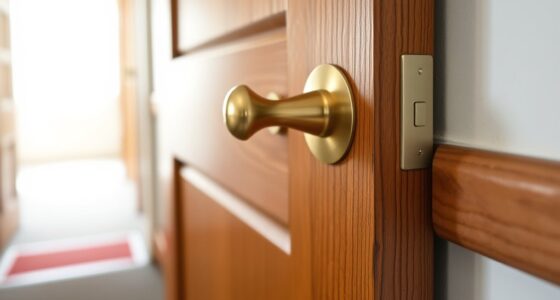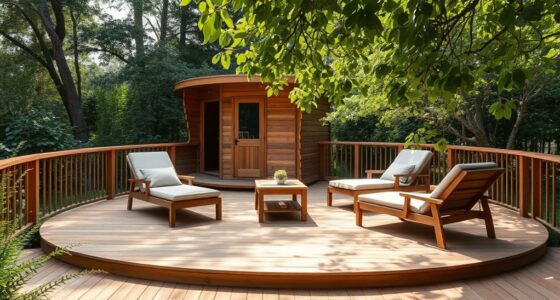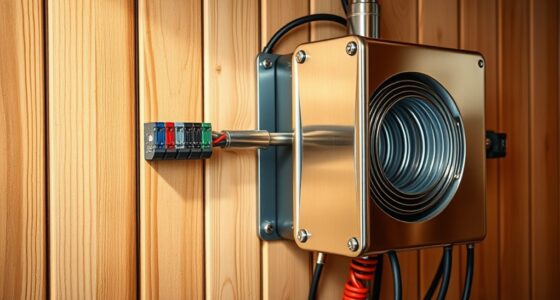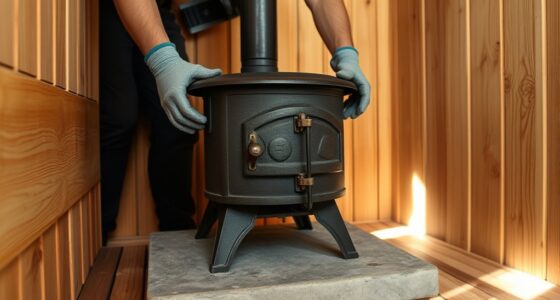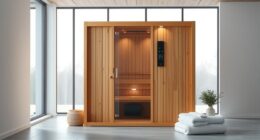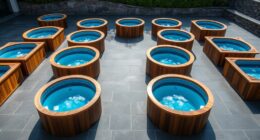Building a cold plunge tub next to your sauna enhances recovery, hydrotherapy, and the hot-cold contrast experience. To do this effectively, focus on proper insulation using materials like spray foam or rigid foam boards to retain cold temperatures and save energy. Use durable, waterproof construction materials like fiberglass or high-grade plastics, and include features such as a drainage system and cover for hygiene. Proper design and insulation guarantee consistent cold water and lasting performance—keep going to explore detailed steps and tips.
Key Takeaways
- Select durable, waterproof construction materials like fiberglass or high-grade plastics for longevity and moisture resistance.
- Incorporate high-quality insulation techniques using spray foam or rigid foam boards to maintain cold temperatures efficiently.
- Design a reliable drainage system for easy cleaning and water maintenance.
- Install a cover to preserve temperature and prevent debris or insects from contaminating the water.
- Insulate surrounding areas to prevent heat transfer and ensure consistent cold water temperatures regardless of climate.

Creating a cold plunge tub next to your sauna is a smart way to enhance your wellness routine. This addition not only boosts your recovery process but also amplifies the hydrotherapy benefits you’re seeking. When you immerse yourself in cold water after a sauna session, you stimulate circulation, reduce inflammation, and promote muscle recovery. The contrast between hot and cold temperatures invigorates your body, sharpens your mental clarity, and can even improve your immune response over time. To maximize these benefits, proper insulation techniques are essential. Well-insulated plunge tubs prevent heat loss, conserving energy and maintaining consistent cold temperatures, making your experience more effective and comfortable. Using high-quality insulation materials, such as spray foam or rigid foam boards, ensures your tub retains cold air or water longer, reducing the need for frequent cooling or reheating. Additionally, insulating the surrounding area helps prevent heat transfer from the environment, keeping your cold plunge at ideal temperatures regardless of weather conditions. Incorporating effective insulation materials into your design is crucial for energy efficiency and maintaining consistent cold temperatures. When building your cold plunge tub, pay close attention to the construction materials. Durable, waterproof materials like concrete, fiberglass, or high-grade plastics are ideal, as they withstand prolonged exposure to moisture without degrading. Incorporate insulation into the walls, and consider sealing all joints thoroughly to prevent drafts or leaks. Proper insulation not only enhances energy efficiency but also maintains a stable cold environment, which is vital for maximizing hydrotherapy benefits. The installation process should include a reliable drainage system to allow easy cleaning and water changes, ensuring hygiene and safety. You might also want to add a cover, which serves two purposes: maintaining temperature and preventing debris or insects from contaminating the water.
Frequently Asked Questions
What Is the Ideal Distance Between the Sauna and Cold Plunge Tub?
You should place your sauna and plunge tub within 10 to 15 feet of each other for smooth sauna placement and plunge tub proximity. This distance allows easy access and maintains a cohesive design while preventing heat transfer issues. Keep pathways clear, and consider local building codes. By ensuring the right proximity, you’ll enjoy seamless transitions and a more functional, relaxing spa area.
How Do I Ensure Proper Drainage for the Cold Plunge Tub?
Did you know proper drainage is vital for preventing water damage? To guarantee this, install effective drainage solutions like sloped ground and drainage channels around your tub. Start by ground leveling to create a slight incline away from the tub, guiding water toward the drainage system. Regularly check and clear these solutions to keep water flowing freely, helping your cold plunge tub stay dry and well-maintained.
What Safety Precautions Should I Consider During Installation?
During installation, prioritize electrical safety by making certain all wiring is properly grounded and insulated. Check the structural integrity of the area to support the cold plunge tub’s weight, especially when filled with water. Use waterproof electrical components and avoid placing electrical outlets near water sources. Also, consider slip-resistant flooring to prevent accidents. Taking these precautions helps protect you and ensures a safe, durable setup for your cold plunge tub.
Can I Connect the Cold Plunge Tub to Existing Plumbing?
You can connect your cold plunge tub to existing plumbing if it’s compatible, saving time and effort. Check plumbing compatibility to confirm your water supply options can handle the additional demand. Coincidences happen when your current system supports the necessary flow rates without upgrades. Always verify water pressure and drainage before connecting, and consider consulting a professional to ensure seamless integration and avoid costly mistakes.
What Maintenance Is Required for the Cold Plunge Tub?
You’ll need to regularly check your cold plunge tub’s water filtration system to keep the water clean. Make sure to clean or replace filters as needed. Keep an eye on chemical balancing by testing the water’s pH and sanitizer levels weekly, and add chemicals accordingly. Also, drain and refill the tub periodically to prevent buildup of minerals or bacteria, ensuring safe and invigorating dips every time.
Conclusion
Now, with your cold plunge tub beside your sauna, you create a sanctuary of contrasts—hot and cold, relaxation and invigoration. It’s like having the fire and ice of wellness at your fingertips, each enhancing the other. This juxtaposition revitalizes your body and mind, turning simple moments into powerful rituals. Embrace the balance you’ve built; it’s where true rejuvenation begins. Your perfect retreat is now complete, ready to refresh you after every session.
